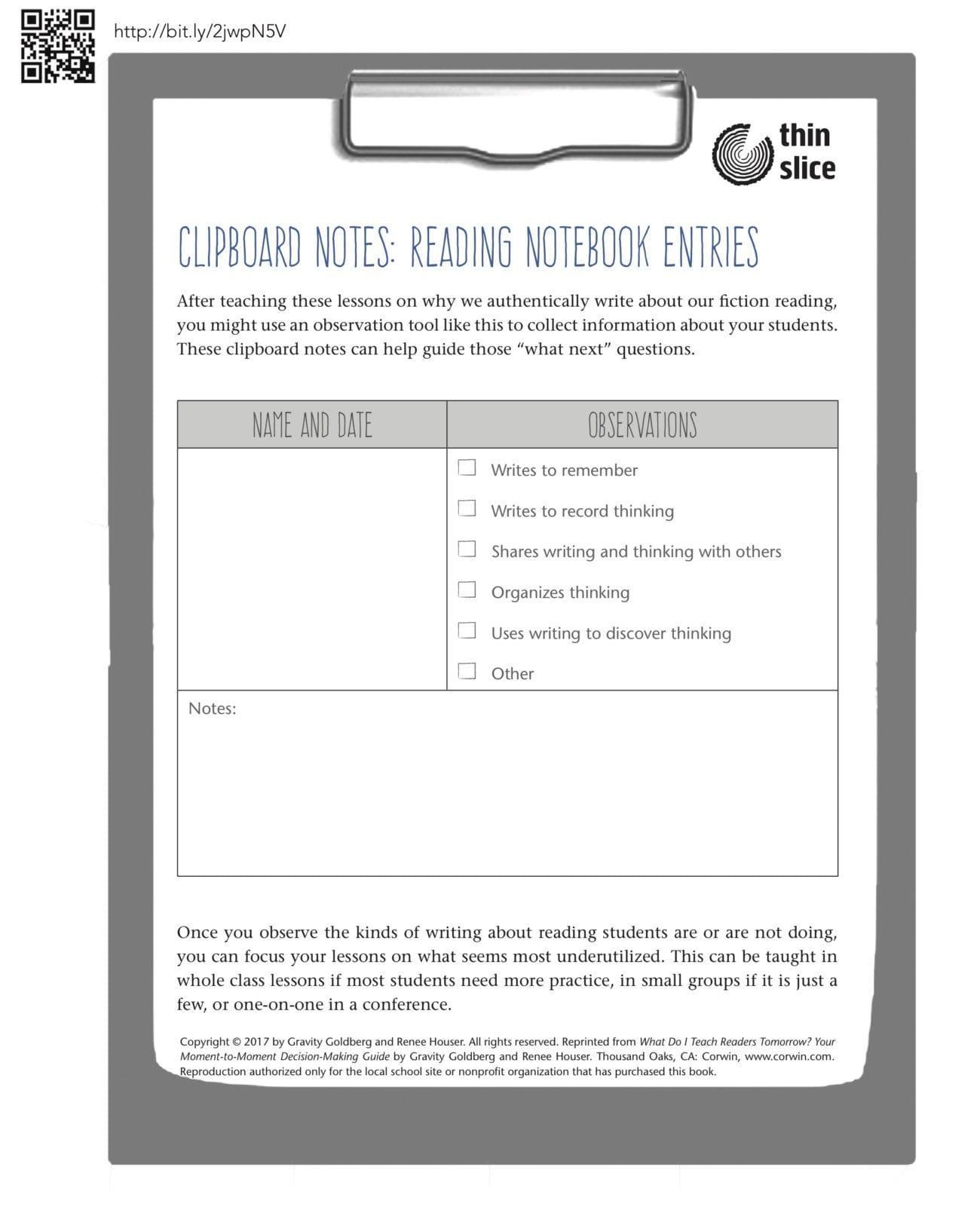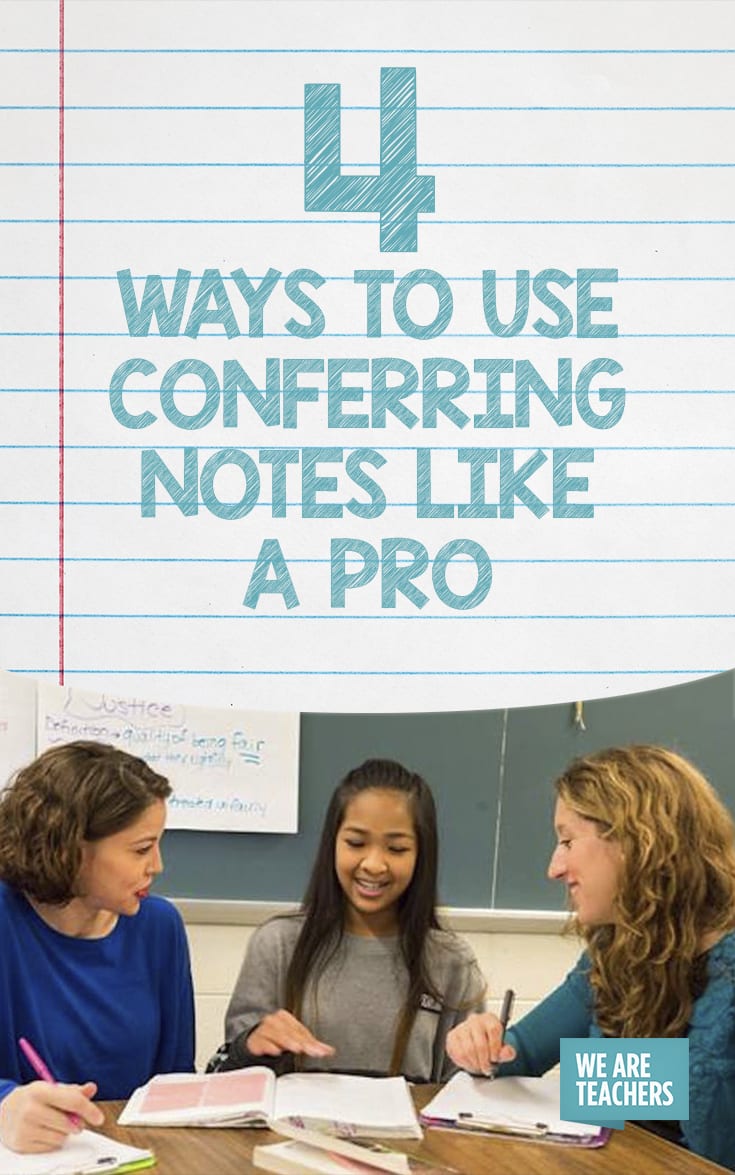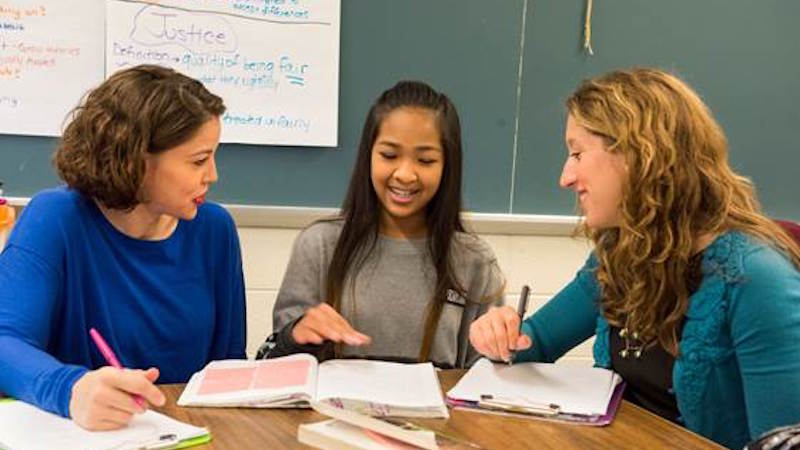When we meet with our students to talk about reading, there are hundreds of questions we could ask. But rapid-fire questions from us could leave our students wondering if perhaps we’ve had too much caffeine. Instead, we want to get super streamlined, and focus on a single purpose. By being clear on our goals for students, note-taking becomes purposeful and powerful. The following are 4 favorite strategies for using conferring notes that will yield the richest information for your follow-up teaching. Check out our FB Live on the topic right here, too.
1. Know what you are looking for.
In a unit of study I taught recently, the sole goal was to really understand characters so that we could become more empathic in our everyday lives. Mini-lessons, discussions, and book choices were all connected back to that main focus. So, as I conferred and listened to students’ discussions, my notes pertained to the degree to which individual readers and the collective whole of the class were thinking about characters’ complexity, conflict, and growth. The upshot? The more you know what you are looking for, the tighter your conferring is, and the more your notes to help with your next day’s instruction.
2. Use categories and checklists.
Rather than go into a conference with every possible teaching option in mind, it helps to create checklists with categories of what you are trying to uncover about your student readers. This is not about forcing students into a checkbox. It’s just a more simplified note-taking system that allows you to look for patterns, trends, and gaps in students’ thinking.

Download a sample clipboard checklist here.
As you can see in this sample clipboard checklist, there are six behaviors we are looking for related to students’ reading notebook entries.The first five are precisely what we have modeled in mini-lessons. When we confer, we are seeing how well readers have “caught” our teaching—and we are also reflecting on the effectiveness of our own recent teaching. The “other” box? It’s an important nod to the fact that whenever we kid-watch, we want to look for and record whatever else comes up about the student as a person, reader, and learner. We encourage students to create their own reading notebook entries and make space for their unique ways of reading and thinking.
3. Read notes before and after meeting with a student.
The more prepared we are when meeting students, the less anxious we are going to feel, and the more students will take from these precious moments with us. As you take notes in the midst of a conference, be sure to include details specific to that particular meeting, which you might bring up at your next meeting with that same student. In other words, conferring notes are there to help you plan instruction, sure, but they are worth their weight in gold in terms of helping each student feel seen and heard. Good, specific notes help you string together a series of conferences that build upon the previous. When you begin a conference by saying, “Last time we met we talked about…” it shows student readers you are picking up where you last left off.
4. Plan tomorrow’s lesson based on today’s learning.
When we read our notes, notice patterns, and identify students’ current thinking, we have all the information we need for responsive teaching. Rather than paging through teacher manuals, searching online, or playing what feels like Pin the Tail on the Donkey by guessing what your students need next, you can use what you already uncovered about your student readers to hit the mark. We do most of our planning for tomorrow’s teaching in the moment of sitting with our students in conferences. Right after a conference, jot down what the reader would benefit from learning next. This saves us time and energy by making our instructional decisions as close to our students as possible.
Become a pro at conferences by taking our four tips into your own classroom. Know what you are looking for, use checklists and categories to take notes, read your notes before and after the next conference, and use today’s learning for tomorrow’s teaching.



